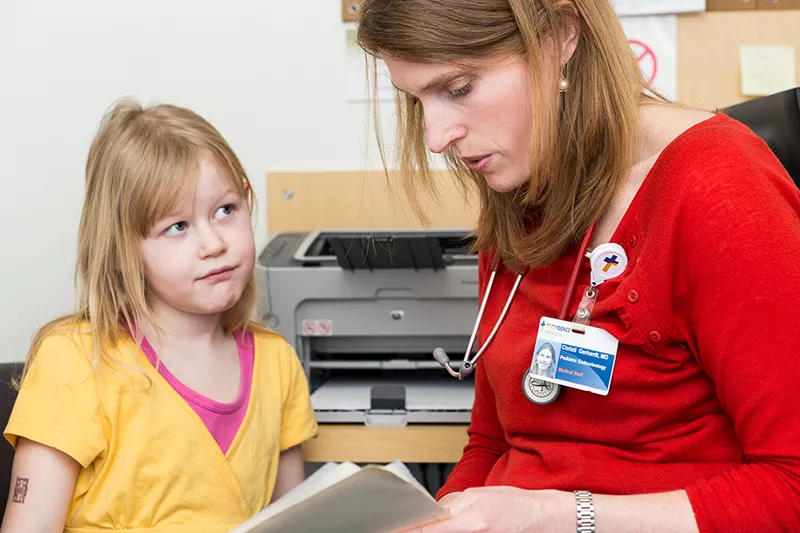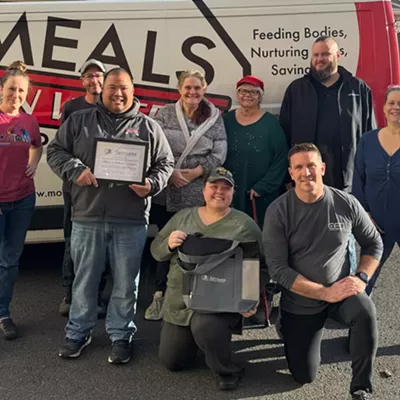On her last official day before retirement, Dr. Vicki Volz sorted through papers in her office and saw a few patients in the cheerful exam rooms down the hall. After eight years evaluating children with autism and other developmental disorders at Sacred Heart Children’s Hospital, she’d been asked whether the ending was bittersweet.
It was more sweet than bitter, she said, because she’d seen encouraging progress with a number of patients in her final weeks. “It’s working with the kids that’s the most gratifying.”
Sacred Heart has been recruiting a new specialist to replace Volz, but it’s unlikely there will be a replacement in the near future.
“Almost everyone in the Pacific Northwest is looking to hire a developmental-behavorial specialist,” says Dr. Judy Felgenhauer, who oversees recruiting for outpatient pediatrics at Sacred Heart.
She doesn’t have trouble getting CVs from general pediatricians, but recruiting subspecialists requires working connections and getting creative. The first time she recruited a hematology-oncology specialist, it took two years.
That’s not unusual — a national shortage of pediatric specialists means many children’s hospitals have long vacancies, and many families wait months for appointments.
“Across the country, you’re looking at long wait times to see pediatric specialists,” says Dr. Jim Kaufman, vice president of public policy for the Children’s Hospital Association.
A recent survey of children’s hospitals found that families often wait more than two months to get an appointment with a pediatric specialist, and that many hospitals have had vacant positions for longer than a year. Of all the specialties tracked in the survey, developmental-behavioral physicians like Volz are in shortest supply, with reported waiting times of more than four months. The wait to see Volz was up to 18 months at one point.
The causes of the national shortage come down to long training and lower-than-average physician pay. Medical students interested in pediatric specialties will spend more years in training, and then they’ll find the health care payment structure is stacked against them. Medicaid, the joint federal-state health program for lower-income children, reimburses at a much lower rate than Medicare or private insurance. At the average children’s hospital, 52 percent of the patients are covered by Medicaid, Kaufman says.
“How do you incentivize people to move into this type of field?” he asks.
This is especially true for the developmental-behavorial specialty, which involves a great deal of consulting and coordinating — “a lot of work that you basically get no reimbursement for,” Felgenhauer says.
National efforts to improve the outlook have run up against budget constraints. Because of a provision in the Affordable Care Act, Medicaid started reimbursing at the same rate as Medicare — but only for some procedures, and only for two years. The Children’s Hospital Association is asking Congress to expand the policy beyond its expiration in 2014, but prospects are grim during these days of budget cutbacks.
There’s also funding uncertainty for hospital training programs, and cuts in training spots now could mean specialist shortages that persist even if the budget scenario gets rosier.
“We’re not talking something [where] you can flip a switch and have a pediatric specialist in a year,” Kaufman says.
Some ambitious doctors train to treat both children and adults, but children have different diseases and needs. Kaufman uses the example of the cardiologist, who works with adult hearts the size of a fist.
“The pediatric cardiologist could be working on something the size of your thumbnail,” he says.
Hospitals devoted to patient care, like Sacred Heart, face another recruiting challenge: Many pediatric specialists choose to stay at academic medical centers where they can do research along with seeing patients.
“Very many of us are here because we specifically chose not to be in an academic setting,” Felgenhauer says.
For some doctors, like pediatric endocrinologist Christi Gerhardt, caring for patients was the appeal. She came to Sacred Heart last summer from a position at Seattle Children’s Hospital, where she realized her favorite part of the job was doing outreach clinics in places like Olympia and Anchorage.
“I really liked that and I wanted it all the time, not just when I went away to outreach clinics,” she says.
At Sacred Heart, she works in a tight-knit clinic treating children who have diabetes or other hormone and growth problems. The whole environment is small enough that doctors can work closely with the hospital’s other specialists. Gerhardt can call another physician and say that a patient scheduled in their clinic next month should be seen sooner.
“We’ll always work out a spot, even if we don’t have availability, to see someone when they need to be seen,” she says.
She still does outreach clinics once a month in the Tri-Cities so families don’t have to make the drive themselves, and hopes all families feel welcomed if their child is diagnosed with Type I diabetes or another chronic illness that will require ongoing care.
“I hope they feel what we feel about this place,” she says, “which is that it’s a family.”
















